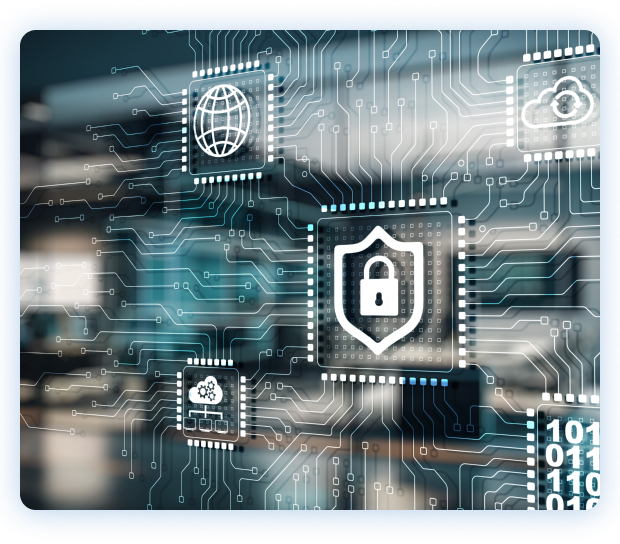In today’s digital world, managing cyber risk has become tougher than ever. Even skilled teams find it challenging to ensure that systems stay secure and compliant. Dave Hatter, the senior cybersecurity consultant at Intrust IT and who has been working in cybersecurity for 30 years says, “As more of our physical world is connected to and controlled by the virtual world, and more of our business and personal information goes digital, the risks become increasingly daunting. While it has never been more important to manage cybersecurity risk, it also has never been more difficult.”
To help you navigate this, we’ve outlined what a cyber risk management process is and why it’s important. This guide will help you take steps to protect yourself in today’s digital landscape.
What is Cybersecurity Risk Management
Cybersecurity risk management helps organizations identify, analyze, evaluate, and address threats based on their severity. This ongoing process involves identifying, analyzing, assessing, remediating, and mitigating potential cybersecurity threats. It is not a single operation performed by the security department but engages everybody in an organization.
Why Is Cyber Risk Management So Complex Today?
Several factors make managing cybersecurity risk management complicated today:
- Explosion of Cloud Services and Third-Party Vendors: According to a Ponemon Institute study, the average company shares confidential information with 583 third parties. This means that IT security teams are always struggling to contain large structures with plenty of vendor risks.
- Increasing Regulations: Organizations must follow more and more laws about protecting confidential data. Companies are responsible for third parties that process data for them, making vendor risk management crucial.
- Impact of the COVID-19 Pandemic: The pandemic brought about remote work on unsecured networks, leading to scrambled security protocols. A reduction in budgetary and staff allocations for compliance poses a problem to enterprises as they come with many impediments that attract harsh penalties in case of non-adherence.
The Cybersecurity Risk Management Process
Organizations usually follow these four steps to manage risk:
- Identify Risk: Understand threats, vulnerabilities, and their possible consequences.
- Assess Risk: Evaluate risks based on the likelihood of threats exploiting vulnerabilities and their potential impact.
- Mitigate Risk: Evaluating the risks and selecting the goals to tackle them.
- Monitor: Ensure that risk responses and controls remain effective in a constantly changing environment.
The National Institute of Standards and Technology (NIST) provides frameworks like 800-30 and Special Publication 800-53 to guide organizations in assessing and reducing risk exposure.
Developing a Cybersecurity Risk Management Plan
Let’s look at each step of the cyber risk management process in detail:
1. Identify Cybersecurity Risks
The first step in risk management is identifying risks. Challenges for modern security teams appear because of progressed IT systems, increasing regulations, and the compounding effects of COVID-19.
When identifying risk, start by understanding threats, vulnerabilities, and their possible consequences:
- Threats: Events or circumstances that negatively affect an organization’s operations or assets through unauthorized access to information systems. These can be hostile attacks, human errors, structural failures, or natural disasters.
- Vulnerabilities: Weaknesses in an information system, security procedure, internal control, or implementation that a threat source can exploit. These can come from internal functions, supply chains, or vendor relationships.
- Consequences: Negative results when threats exploit vulnerabilities. Quantitative assessments of risk are facilitated by estimating the extent of these consequences.
2. Assess Cybersecurity Risks
Risk assessments highlight the importance of security across the organization. Start by listing all assets and prioritizing their importance. Identify all possible threats and vulnerabilities, address known vulnerabilities with appropriate controls, and determine the likelihood of threat events. Conduct an “impact analysis” to estimate potential consequences and costs.
3. Identify Possible Cybersecurity Risk Mitigation Measures
Identifying and assessing risk is just the beginning. Your organization must decide how to respond to the identified risks. Technological and best practice methods can be used to mitigate risk:
- Technological measures: Encryption, firewalls, threat-hunting software, & automation for increased system efficiency.
- Best practices: Cybersecurity training, patching, privileged identity management, identity and access management, and data backup.
One of the last components is known as residual cybersecurity risk management, which is the risk that remains even after applying all the protective mechanisms. Organisations can agree to take this risk or they can delegate it to an insurance company.
4. Use Ongoing Monitoring
However, risk identification, assessment, and management are not the final steps because of the often unpredictable nature of risks and their manifestations. Organizations must ensure internal controls remain aligned with IT risk by monitoring:
- Regulatory changes: Engagement with new and changing rules to make sure internal controls reflect the ideas of external controls.
- Vendor risk: Reviewing and updating the standard template for security and compliance controls whenever there is a new vendor addition to the list.
- Internal IT usage: Monitoring the adoption of technologies in internal teams to avoid being caught off guard by some loopholes.
Advantages of Cybersecurity Risk Management
Incorporating an effective cybersecurity risk management strategy offers numerous benefits:
- Enhanced Protection: In this way, it is possible to recognize the vulnerabilities and threats and minimize the adverse impact they have on the organization’s security. This reduces the likelihood of data breaches, financial losses, and reputational damage.
- Enhanced Business Reputation: It is useful to have plans for the early identification of a threat in order to retain a good image & regain the customers’ confidence.
- Strengthening IT Team Support: More importantly, the strategies will enable the proactive management of security issues thus shifting the focus of IT departments to working towards objectives rather than battling emergencies.
- Reducing Downtime: Effective risk management helps prevent debilitating attacks that cause extended downtime, minimizing financial costs and operational disruptions.
- Regulatory Compliance: A lot of industries and organizations all over the world operate under specific legal regulation frameworks that concern information security or cybersecurity. A robust cybersecurity risk management framework helps organizations comply with these regulations, avoiding potential fines and legal consequences.
- Business Continuity: Continuity management of cybersecurity risk is crucial to guarantee that an organization can continue with operations even in the event of a cyber attack. This includes having backup systems and disaster recovery plans in place to minimize downtime and disruptions.
- Improved Confidence: Showing that you take cybersecurity risk seriously cannot be overstated as it may improve the customers, partners or investors’ trust. This can lead to stronger business relationships and increased trust in the organization’s ability to protect sensitive information.
Conclusion
Managing cybersecurity risk management in today’s complex digital landscape is crucial for protecting organizational assets, operations, and reputation. Current cybersecurity risks can be controlled and organizations can remain secure if a structured risk management process is implemented, technologies and best practices are adopted and environments monitored.

